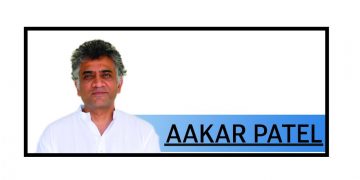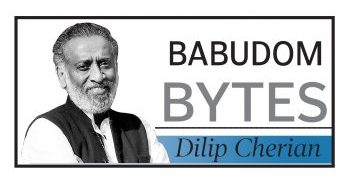RK Pattnaik
The focus of the Union Budget 2022-23 presented to Parliament February 1, 2022 is to facilitate “the process of strong growth.” Accordingly, the Budget “seeks to lay the foundation and give a blueprint to steer the economy over the ‘amrit kaal’ of the next 25 years – from India at 75 to India at 100.” In this context, the three-fold vision which the Budget has enumerated is: (a) complementing the macro-economic level growth focus with a micro-economic level all-inclusive welfare focus, (b) promoting digital economy & fintech, technology-enabled development, energy transition, and climate action, and (c) relying on a virtuous cycle starting from private investment with public capital investment helping to crowd-in private investment. The Budget has mentioned that ‘amrit kaal’ is futuristic and inclusive and to give impetus to growth with four clear priorities viz; (a) the PM Gati Shakti, (b) inclusive development, (c) productivity enhancement & investment, sunrise opportunities, energy transition and climate action and (d) financing of investments.
It is pertinent to note that the vision and the priorities cited in the Budget are mostly in a longer-term perspective. We wonder how this could be addressed in the Budget 2022-23 which has been under a rule-based fiscal policy (limits on borrowing by the government) since July 5, 2004. It is important, therefore, to delve into the extent to which budgetary expenditure could be enhanced to move the economy to higher growth, given the limitations to raise revenues. Accordingly, let us study the fiscal management of the government which is the core function of a Budget.
Fiscal management deals with expenditure (both revenue or consumption and capital or asset creating expenditure), receipts (tax, non-tax and disinvestment proceeds) and borrowings to finance the deficit of the government. During 2021-22, as per the April-November data, there was a rebound of revenues and expenditures were lower and we are expecting a lower fiscal deficit relative to GDP. But in the revised estimates, the fiscal deficit to GDP ratio became higher at 6.9 per cent of GDP than that of 6.8 per cent of GDP in 2021-22 Budget estimates because of higher provision of expenditure. This is attributed to the surge in socio-economic welfare-related expenditure on account of successive pandemic waves during the year and also the settlement of past Air India dues. Thus, revenue growth has not really supported lower fiscal deficit as was expected.
Another important issue is disinvestment proceeds. Evidence suggests that the government has an ambitious disinvestment target but has not been able to materialise the same. For example, the Budget for 2021-22 estimated an amount of `1,75,000 crore but in the revised estimate it was reduced to `78,000 crore.
The Budget for 2022-23 has made a provision of total expenditure relative to GDP at 15.3 per cent with a breakup of revenue expenditure of 12.4 per cent of GDP and balance 2.9 per cent of GDP as capital expenditure. The receipts which include tax receipts (7.50 per cent of GDP), non-tax receipts (1.05 per cent of GDP) and disinvestment proceeds and recovery of loans (0.31 per cent of GDP) together accounted for 8.9 per cent thus, leaving a deficit (fiscal deficit) of 6.4 per cent of GDP. Fiscal deficit at this level is more than double of the level legislatively mandated under the Fiscal Responsibility and Budget Management (FRBM). The higher fiscal deficit is contributed by higher revenue deficit (revenue expenditure minus revenue receipt) at 3.3 per cent of GDP. It may be mentioned that fiscal correction and consolidation (limit the fiscal deficit to GDP ratio at 3 per cent) efforts have been weak. As the Budget has mentioned, even a 3 per cent fiscal deficit will not be achieved by 2025-26.
The above discussion suggests that in a democracy there is a deficit bias as expenditure is welcome but not tax. This means higher borrowings.
Needless to say, borrowing to finance the fiscal deficit has adverse implications on the interest rate. Interest rate on government borrowing goes up with higher borrowing and makes the cost of the bank lending rate higher. The private sector is discouraged from borrowing from banks by the higher interest rate.
Furthermore, as the interest rate increases, the private sector is discouraged to issue bonds. In the end, private investment and private consumption because of the higher interest rate decline and ultimately economic growth suffers. This development contradicts the government claim that “FY 2022-23 will see an unprecedented thrust on capex public spending which is crucial for economic growth and generation of productive employment.”
There are two crucial issues which need to be addressed in the context of the fiscal policy strategy of the government. One is resurfacing of inflation in advanced economies and in many emerging market economies. This trend will result in imported inflation in India leading to higher input costs which will adversely impact growth.
The second issue is sustaining economic growth while adhering to a lower fiscal deficit. What is important in this context is higher tax collection, minimising tax exemptions, and broadening the tax base to achieve a higher tax to GDP ratio. In Budget 2022-23, the gross tax revenue (GTR) has been estimated at 10.7 per cent of GDP. This is inadequate to address the fiscal correction. At least GTR as a percentage to GDP should go up to 11.5 per cent in a conservative estimate.
Another important issue is the amendment to the FRBM Act which remains pending. The FRBM Act should be amended to include revenue deficit to GDP ratio at zero. The root of all fiscal malaise is borrowing for current consumption. This trend of a persisting higher revenue deficit should be arrested. The government should not and cannot live beyond its means. Inclusive growth is also critical. Lower inflation facilitates inclusive growth.
In the context of constitutional mandate, state governments have more expenditure responsibility. An effective coordination between the Centre and states is helpful. Similarly, the civic government which is also called the third layer government should not suffer from a resource crunch as the basic health, basic education and provision of basic amenities are the responsibilities of municipalities.
The Budget lacks the direction of a longer-term perspective on managing growth, inflation and fiscal consolidation. This development questions how the Budget could be helpful in facilitating its professed vision and priorities, one of “amrit kaal.”
The writer is a former central banker and a faculty member at SPJIMR. Views are personal. ©The Billion Press






































